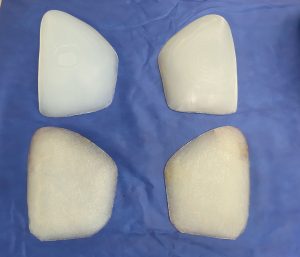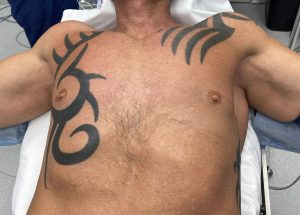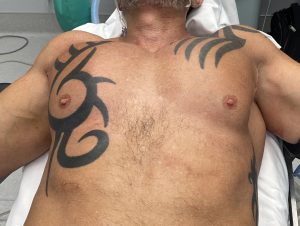Background: Pectoral implants are the male version of chest enhancement which has many differences from that of its female counterpart of breast implants. Besides the obvious differences in implant structure (solid male implant vs gel-filled female implant) the other major difference is in how they impact the pectoral muscle. While many breast implants are placed under the pectoralis major muscle, the intent is to create a round or tear drop shaped breast mound not specifically an increase in the size of the muscle. (cover part of the implant with a thicker soft tissue cover) Conversely n male chest enhancement the very specific objective of the implant is to increase the visible size of the muscle.
As a result male chest implants are design to stay within the confines of the pectorals major muscle. Two of the four borders of the muscle are fixed and unalterable. (superior and medial borders) The inferior border (inframammary fold level) can be lowered but shouldn’t be. The lateral pectoral border can be ‘violated’ but usually only is done so in larger pectoral implants where the patient may prefer a very rounder lateral pectoral shape. Thus the pectoral implant footprint (perimeter shape of the implant) is relatively fixed and it is the projection of the implant that will control its size. (volumetric increase)
While in breast implants the implant size is most commonly related to its volume that concept is most easily understood because it is spherical in shape. While pectoral implants also have volumes they are not spherical and the volume concept becomes less useful. Pectoral implants are better understood and discussed with patients based on where and what projection increases that it creates.
Where pectoral implant volumes are very useful is when the implant is being replaced for a larger size. As applies to many implants all over the body a general rule is that an implant replacecment must have at least a 30% volume increase for a modest change, a 50% to 75% volume increase for a more significant change and never anymore than a 100% volume increase. (or it may not fit into the pocket)
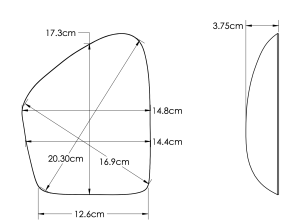
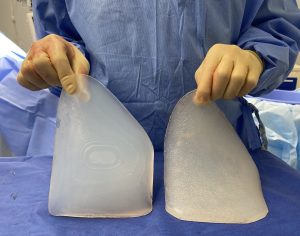





Case Highlights:
1) Pectoral implants create a fixed external result based on their perimeter shape and their amount and location of projection.
2) When replacing pectoral implants for a larger size the footprint of the implant usually must stay the same but the projection can change.
3) To see a visible difference in the projection of pectoral implants the volume must be increased a minimum of 50% and up to 100% increase.
Dr. Barry Eppley
World-Renowned Plastic Surgeon



